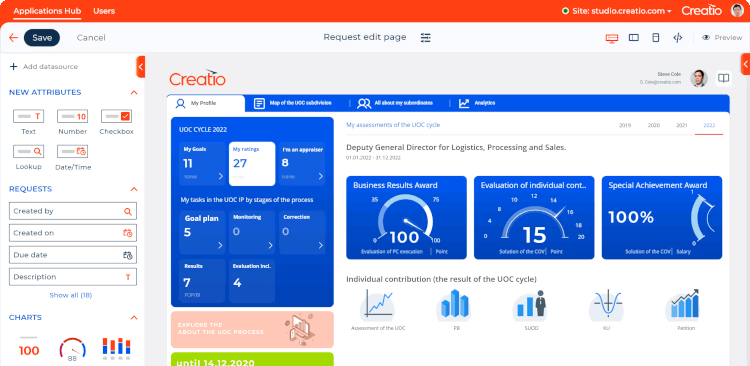Uncomplicated Open System Database Development Utilizing No-Code Innovation
Uncomplicated Open System Database Development Utilizing No-Code Innovation
Blog Article
Discover Exactly How Scalable Databases Can Be Utilized Without Coding to Boost Your Service Operations
In today's fast-paced business environment, the ability to manage and evaluate data effectively is extremely important. no-code. Scalable data sources, specifically when coupled with no-code remedies, supply a transformative strategy that empowers non-technical customers to simplify procedures.
Understanding Scalable Data Sources
Scalable data sources are vital for modern-day business operations, permitting organizations to efficiently handle raising volumes of data without giving up performance. These data sources are created to expand and adjust to the altering needs of an organization, guaranteeing that they can manage bigger datasets and even more complex inquiries as business requirements develop.
Comprehending scalable data sources includes recognizing their 2 primary kinds: upright scaling and horizontal scaling. Vertical scaling, or "scaling up," involves including even more power (CPU, RAM) to an existing server to improve performance. Alternatively, straight scaling, or "scaling out," involves including extra web servers to disperse the load, which commonly causes better adaptability and mistake tolerance.
One more essential facet is the style of scalable data sources, which can be either non-relational or relational. Relational data sources, such as MySQL and PostgreSQL, are structured and utilize SQL for inquiries, while non-relational databases, like MongoDB and Cassandra, offer even more adaptability with disorganized data.
Ultimately, understanding scalable data sources is crucial for services intending to take advantage of data as a calculated property, enabling them to continue to be affordable in a significantly data-driven setting.

Benefits of No-Code Solutions
Unlocking the possibility of no-code services encourages services to simplify procedures and boost productivity without the need for considerable programming understanding. These systems allow non-technical customers to create, customize, and handle data sources easily, hence equalizing accessibility to technology across teams.
Among the primary benefits of no-code services is their rate of execution. Companies can promptly release applications and automate procedures, considerably minimizing the moment invested in growth cycles. This dexterity makes it possible for companies to react promptly to market changes and customer demands, fostering an one-upmanship.
Additionally, no-code platforms reduce reliance on IT divisions for day-to-day jobs, enabling technological teams to concentrate on even more intricate tasks that require specialized abilities. This change not just enhances resource allotment but also advertises innovation within the organization.
Cost-effectiveness is one more advantage, as no-code solutions can lower development and upkeep expenses. By minimizing the need for coding know-how, business can harness the abilities of their existing workforce without the expenses of working with extra workers.
Popular No-Code Database Devices
The increase of no-code remedies has resulted in the emergence of numerous data source tools that provide to businesses looking for efficiency and accessibility. These tools empower individuals with minimal technological experience to produce, manage, and adjust databases seamlessly.

Caspio attracts attention for its ability to build web applications with no coding. It enables services to produce robust databases and deploy applications swiftly, satisfying numerous sector demands. In a similar way, Flair offers powerful information and easy to use interfaces monitoring abilities, enabling companies to develop custom applications customized to their workflows.

Usage Instances in Service Workflow
Exactly how can companies leverage database devices to boost their procedures? Scalable data sources supply organizations with powerful capabilities to manage and evaluate data without the demand read the full info here for comprehensive coding knowledge. These tools can streamline various service processes, ultimately causing boosted efficiency and efficiency.
One famous usage instance is customer relationship management (CRM) Companies can use scalable databases to track customer communications, preferences, and feedback, enabling tailored interaction and far better solution. By streamlining this information, teams can collaborate better and react to client requirements in real-time.
One more significant application is inventory monitoring. Companies can use no-code data source tools to monitor stock degrees, track deliveries, and forecast demand. This makes sure optimal stock degrees, decreases waste, and decreases stockouts.
Additionally, task administration can profit from scalable data sources by allowing groups to manage jobs, deadlines, and sources in a combined platform. With real-time updates and information visualization, project supervisors can make educated decisions.
Getting Began With Implementation
Executing scalable data sources in organization procedures calls for a structured strategy to ensure effective combination and application. The very first step is to conduct a thorough demands assessment, determining certain organization requirements, data types, and expected development patterns. look at more info This fundamental understanding will certainly guide the selection of the suitable database option.
Following, pick an user-friendly, no-code database platform that aligns with your operational goals. no-code. Numerous contemporary options use instinctive user interfaces, allowing non-technical users to manage data successfully. After picking a system, develop a clear information style that outlines how data will be organized, accessed, and preserved
Training is critical; guarantee that staff member are outfitted with the necessary skills to use the database. Take into consideration providing tutorials or workshops to acquaint team with the system's functionalities.
Final Thought
In verdict, the combination of scalable databases through no-code options presents substantial advantages for business procedures. Eventually, leveraging these modern technologies can lead to improved performance and operational effectiveness, placing services for continual growth in an affordable landscape.
One preferred no-code database device is Airtable, which combines the performance of a spread sheet with the power of a database.Exactly how can organizations take advantage of data source devices to enhance their operations? Organizations can utilize scalable databases to track consumer interactions, preferences, and responses, enabling individualized interaction and better service.Applying scalable databases in company procedures requires a structured technique to ensure successful her latest blog combination and utilization.In conclusion, the combination of scalable data sources via no-code solutions presents considerable benefits for organization procedures.
Report this page